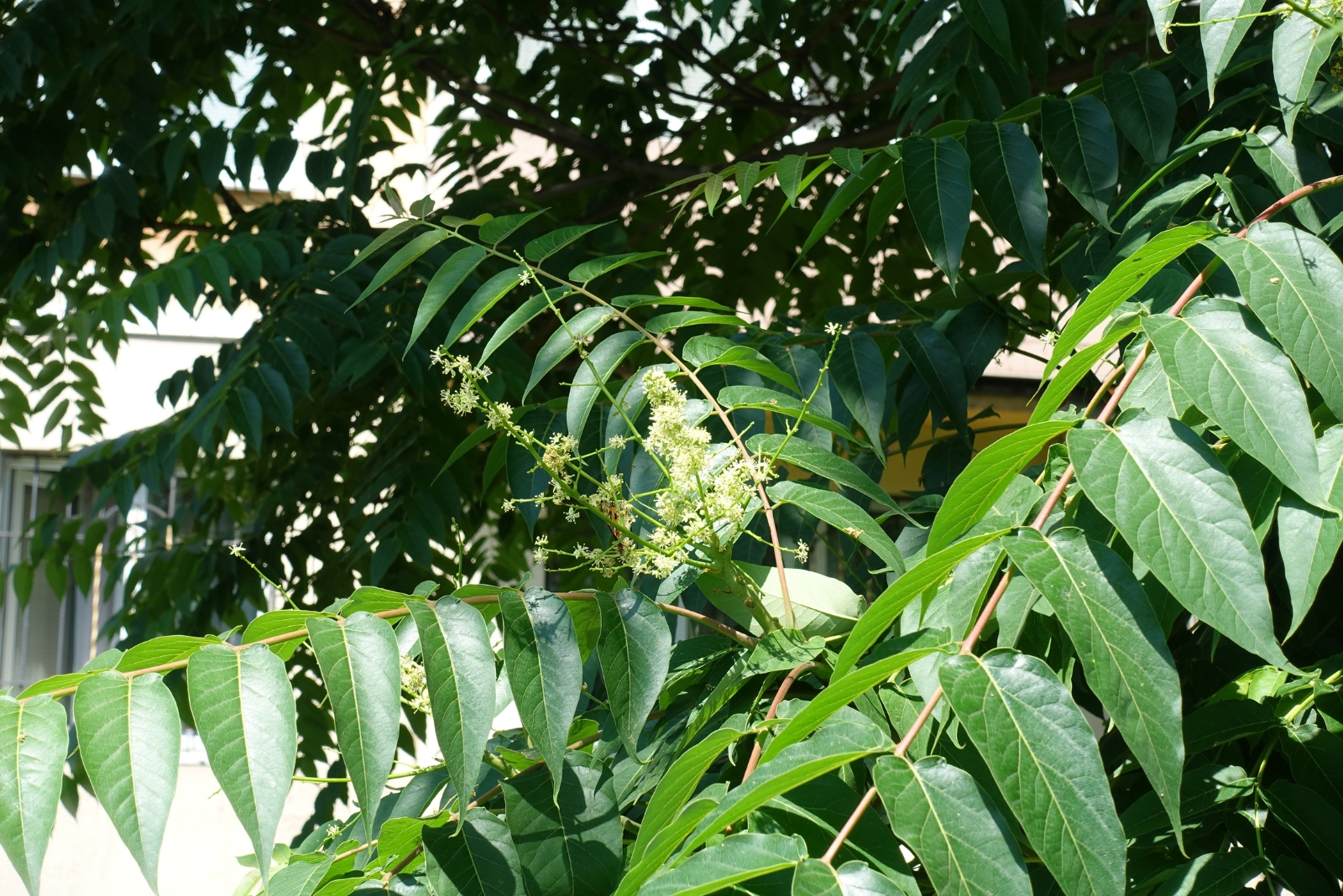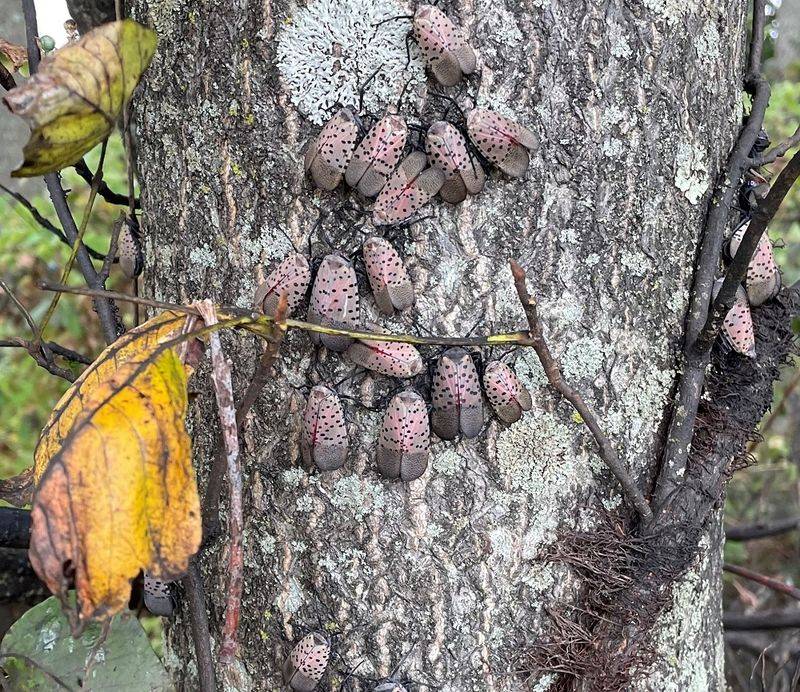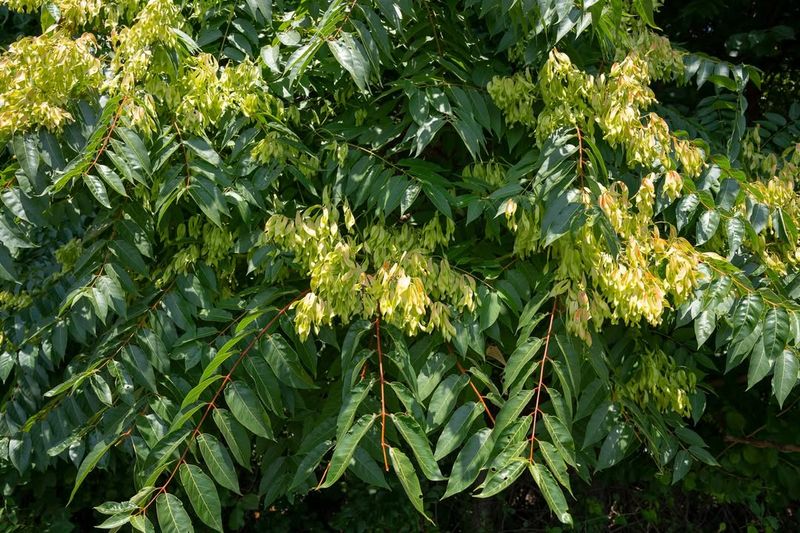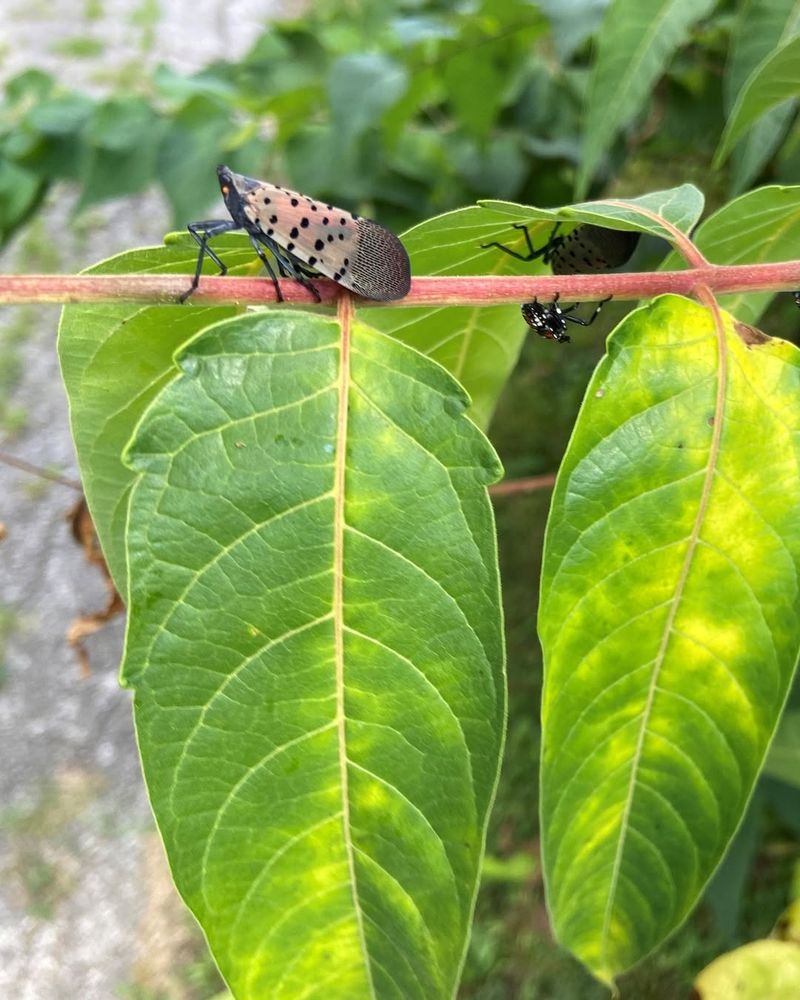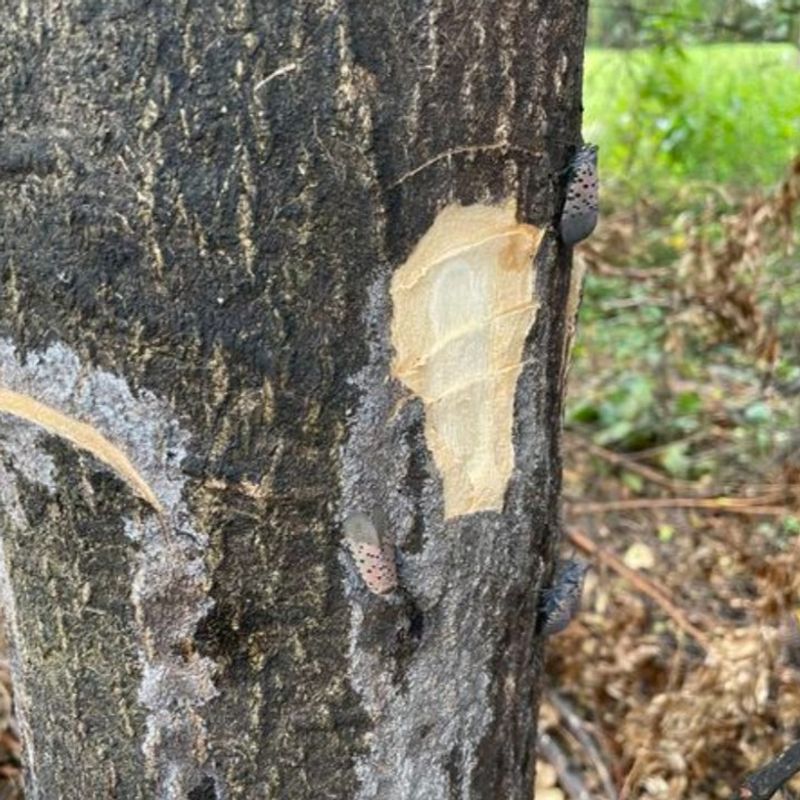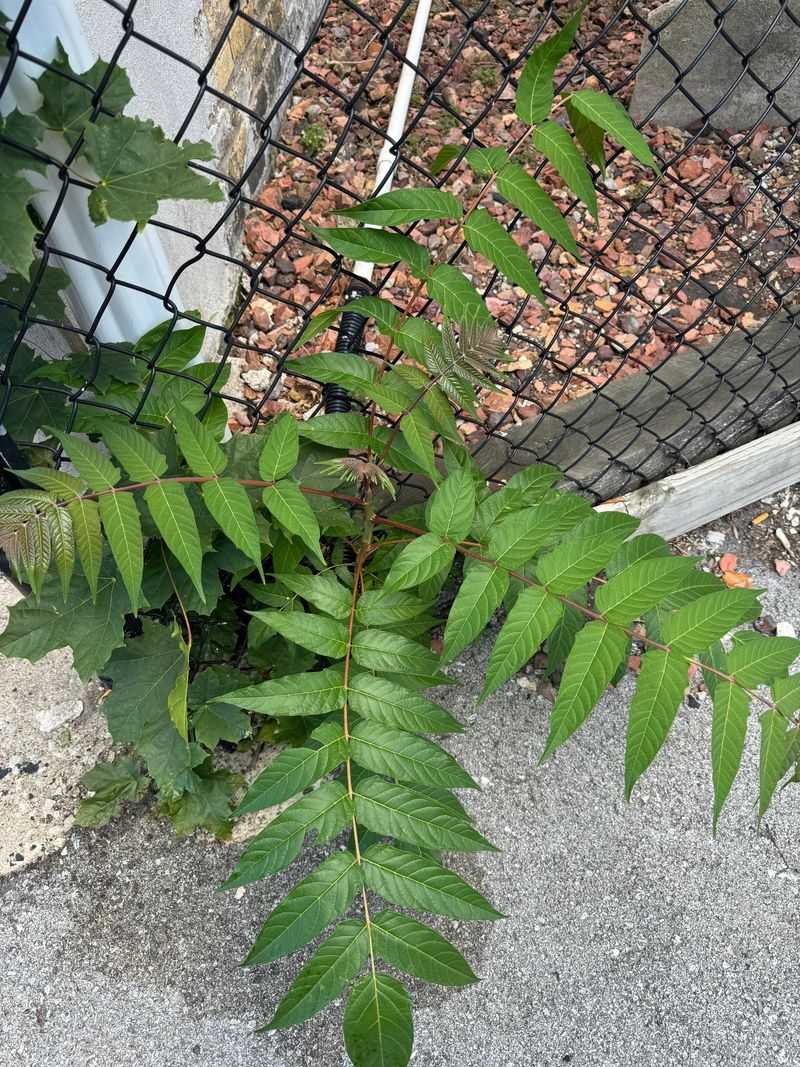Lanternfly infestations spread fast across Massachusetts, and one particular tree encourages their growth rather than slowing it. This species provides food, shelter, and ideal breeding conditions, allowing lanternfly numbers to surge in nearby landscapes.
Its presence can turn a small problem into a widespread issue. That tree is tree of heaven, a notorious host that fuels lanternfly outbreaks.
1. Lanternflies Prefer Tree Of Heaven Over All Other Plants
Spotted lanternflies absolutely love the Tree of Heaven more than any other plant species. Scientists have discovered that these colorful pests choose this tree first when looking for food and places to lay eggs.
The tree produces chemicals that actually attract lanternflies from far distances. When lots of Trees of Heaven grow in one area, they create a perfect gathering spot for thousands of hungry insects. Removing these trees can help reduce lanternfly populations significantly in your Massachusetts neighborhood.
2. Tree Of Heaven Spreads Incredibly Fast Through Root Systems
One single Tree of Heaven can create an entire forest through its underground roots. The roots spread out like a spider web beneath the soil, sending up new baby trees called suckers everywhere.
A single tree can produce dozens of offspring in just one growing season in Massachusetts. If you cut down one tree without treating the stump, five more might pop up to replace it. This rapid spreading ability gives lanternflies more and more host plants to feed on each year.
3. The Tree Provides Perfect Egg-Laying Surfaces For Lanternflies
Female lanternflies need rough, protected surfaces to deposit their eggs during fall and winter. Tree of Heaven bark provides exactly what they need with its deep grooves and textured surface.
Each egg mass contains 30 to 50 eggs covered in a gray, waxy coating that looks like dried mud. The bark’s texture helps these egg masses stick firmly and survive harsh Massachusetts winters. Come spring, hundreds of baby lanternflies hatch from a single infested tree.
4. Tree Of Heaven Grows In Hard-To-Reach Places
You’ll often find Trees of Heaven sprouting in the most inconvenient locations imaginable. They pop up along railroad tracks, in sidewalk cracks, behind old buildings, and in forgotten corners of parking lots.
Their ability to grow anywhere makes them nearly impossible to completely eliminate from an area. Lanternflies take full advantage of these hidden trees, breeding in places where people rarely notice them until the infestation becomes severe and spreads to surrounding Massachusetts properties.
5. The Tree Can Tolerate Almost Any Growing Condition
While most trees need good soil, plenty of water, and ideal sunlight, the Tree of Heaven thrives practically anywhere. It grows in polluted city air, terrible soil, deep shade, or scorching sun without any problems.
Drought doesn’t slow it down, and cold Massachusetts winters barely affect it. This incredible toughness means the tree survives where native plants struggle, creating reliable food sources for lanternflies even during difficult growing seasons when other plants might fail.
6. Young Trees Are Easily Mistaken For Native Species
Many people accidentally let Trees of Heaven grow because young saplings look similar to native sumacs, walnuts, or ash trees. By the time someone realizes the mistake, the tree has already established deep roots.
The leaves have a similar compound structure that fools even experienced Massachusetts gardeners at first glance. Only when you crush the leaves and smell the distinctive peanut butter odor can you identify it correctly. Meanwhile, lanternflies have already found their new favorite home.

